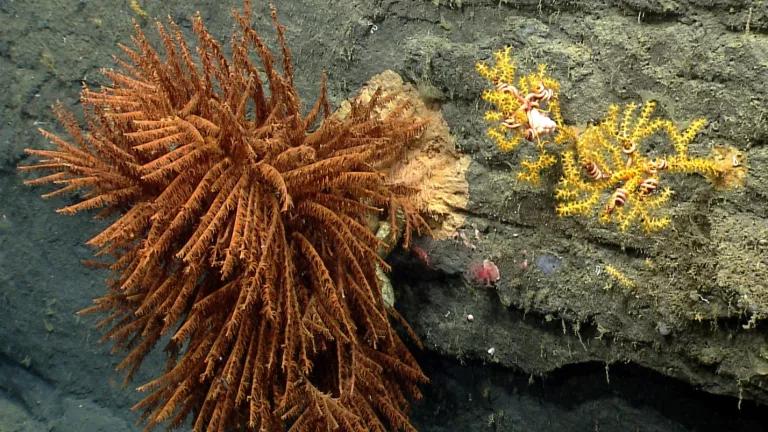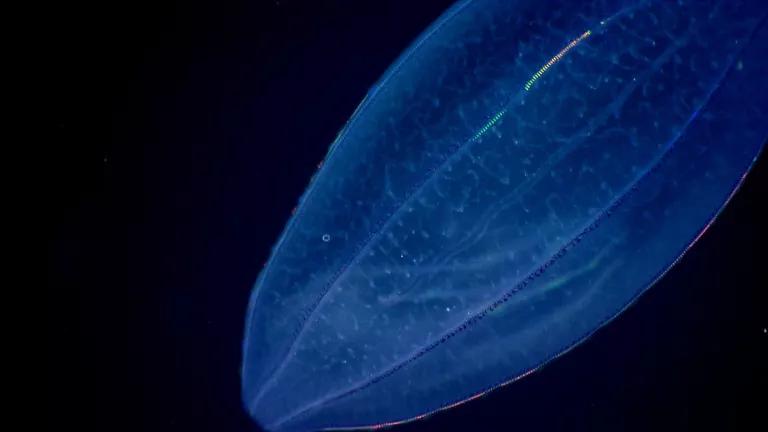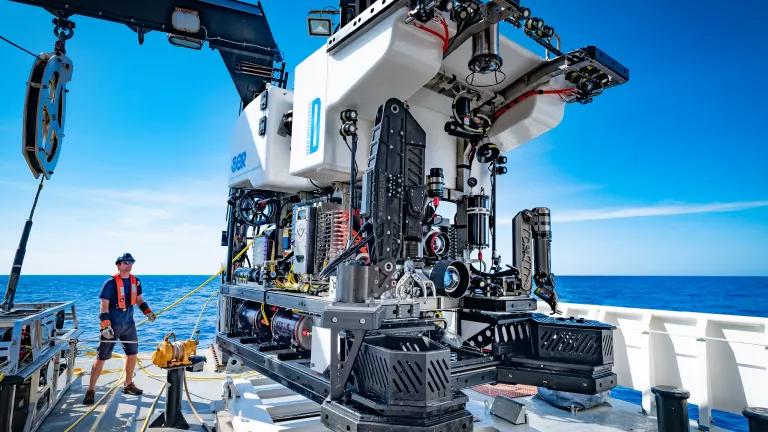NRDC Acts to Defend Atlantic’s First Marine Monument

Credit: NOAA OKEANOS Explorer Program, 2013 Northeast U.S. Canyons Expedition.
NRDC is seeking to intervene in a lawsuit that challenges the New England marine monument established last September—the first such monument off the continental U.S.
Together with other supporters of the Northeast Canyons and Seamounts Marine National Monument, NRDC today filed this motion to intervene in a lawsuit filed earlier this month by five regional commercial fishing associations. This ocean park spans almost 5,000 miles and safeguards ancient coral gardens, endangered sperm whales, Atlantic puffins, and literally thousands of other animal species for the benefit of all Americans. Our goal is to prevent it from being handed back to private industries for commercial exploitation, including commercial fishing, seismic surveying, oil and gas drilling, and mining. We also want to protect the President’s authority to designate future marine monuments and demonstrate that the other four marine monuments–designated by Presidents Obama and George W. Bush—were legally created. Our partners seeking to intervene include a naturalist who leads whale watch tours, Conservation Law Foundation and the Center for Biological Diversity (CBD).
I have written here about the canyons and seamounts monument, off the coast of Cape Cod, and why it’s so special.
The five commercial fishing associations filed their complaint in the US District Court for the District of Columbia on March 7th. They are represented by the Pacific Legal Foundation, a California-based group that says it litigates “for limited government, property rights, free enterprise, and a balanced approach to environmental regulations.”
The fishing groups are claiming that (1) that the President does not have the authority under the monuments law, the Antiquities Act, to create ocean monuments, including specifically in the U.S. Exclusive Economic Zone (EEZ), and (2) the canyons and seamounts monument is “overly large” and is not “smallest area compatible with proper care and management of the objects to be protected,” as required under the Antiquities Act.
Those claims are wrong.
The Antiquities Act provides authority for ocean monuments, not just land monuments.
The Supreme Court has made clear that presidents can establish national monuments to protect areas of water, and not just land. There are numerous examples of monuments that extend into the ocean or fully encompass marine waters. Moreover, the Antiquities Act explicitly provides for monuments to include areas “controlled” by United States. A U.S. Department of Justice Office of Legal Counsel memo concluded that the EEZ is an area controlled by the U.S.
The monument’s size meets Antiquities Act requirements.
As for the “smallest area” claim, courts have uniformly rejected such claims in the past. The Antiquities Act invests significant discretion in the President to identify important natural and archaeological areas that should be protected for the benefit of the American public. In this case, President Obama described with specificity the objects to the protected—the seamounts and canyons and the ecosystems they support—and provided a detailed rationale.
There has never been successful legal challenge to a national monument. But we want to make sure this perfect legal record stays intact and we are concerned about the suggestion by Interior Secretary Zinke, a defendant in the lawsuit, at his confirmation hearing that the Trump Administration might reconsider some of former President Obama’s monument designations, specifically opining that “[i]t will be interesting to see whether the President has the authority to nullify a monument.”
The commercial fishing associations’ complaint greatly overstates the monument’s actual impacts on commercial fishing. The area was historically relatively lightly fished because it is so deep and rugged. The final monument was reduced significantly from that originally proposed to leave out more fished areas. Moreover, the monument provides a seven year grace period for the handful of lobster and red crab fishermen using the area to transition their operations to other areas. The monument also doesn’t affect catch limits. And it protects only a tiny fraction of the ocean (about 1.5%), which leaves the fishermen free to fish other places. A more detailed analysis of the monument’s impacts on commercial fishing is available here.
Even though there was historically relatively little commercial fishing in the monument area, that doesn’t mean it was not a threat. Fishing, as well as energy extraction and mining, will inevitably extend into deeper waters in the future. Industrial fishing gear used in the deep ocean, like large weighted nets that are dragged along the bottom, can damage and kill fragile, centuries old deep sea corals in the monument area. If damaged or killed, long-lived and slow-growing deep sea organisms recover very slowly. Fishing gear can also catch and entangle whales, dolphins, sea birds, and sea turtles that are attracted to the abundant small fish and other food in the monument.
There was an extensive public process over a full year leading up to this monument’s designation. More than 300,000 people and organizations—including over a hundred scientists, the region’s two leading aquaria, conservation organizations, and many businesses and faith leaders—wrote supporting petitions and letters to President Obama. Dozens of federal, state, and local political officials (including the entire Connecticut U.S. Congressional delegation) supported the monument’s creation. In a survey last year, four out of five respondents in Rhode Island and Massachusetts supported permanent protection of the canyons and seamounts area.
Recreational fishing is allowed in the monument area, and many in the angling community have lent their support to the monument. Canyons like those in the monument are favorite fishing spots for tuna, billfish, mahi-mahi, and wahoo, which are attracted to the abundant small fish and other forage in the area. Such angling provides significant economic, as well as social and cultural, benefits to coastal communities.
There are very few “blue parks” for our oceans like our national parks on land. These waters belong to all Americans. And monument designations are the best way to preserve and restore our most special and important ocean ecosystems. A monument is one of the few tools that can protect against all commercial extractive activities, from fishing to mining to drilling, in perpetuity. The Northeast Canyons and Seamounts Marine National Monument is the first such marine national monument off the continental United States.
Monuments benefit fishermen and coastal communities.
Scientists have found that protected ocean areas increase the density, diversity and size of fishes and invertebrates that are important to fishermen, both commercial and recreational. The areas can restore key ecological functions and species interactions that benefit populations of commercially-caught fish and invertebrates. One way of illustrating the benefits is the well-known phenomenon of fishermen fishing around the boundary lines of protected areas to reap the benefit of the spillover effect.
Like public lands, the U.S. is required to manage our publicly-owned ocean area for all its citizens. For the commercial fishing industry, catching fish is much like the commercial timber industry logging in national forests. That is to say, there’s no blank check for private interests in using our public resources—it is reasonable and necessary to limit industry’s ability to exploit our publicly-held waters.
Special places on land and in the ocean are our country’s heritage – and belong to all Americans. They provide us with places to fish and pursue public recreation. They are home to our most precious and unique ecosystems. They support biodiversity and enhance resilience against the effects of carbon pollution.
NRDC will fight to keep these special places protected so future generations of Americans can enjoy and benefit from them.





